
Contortion is a performance art in which performers called contortionists showcase their skills of extreme physical flexibility. Contortion acts often accompany acrobatics, circus acts, street performers and other live performing arts. Contortion acts are typically performed in front of a live audience. An act will showcase one or more artists performing a choreographed set of moves or poses, often to music, which require extreme flexibility. The physical flexibility required to perform such acts greatly exceeds that of the general population. It is the dramatic feats of seemingly inhuman flexibility that captivate audiences.
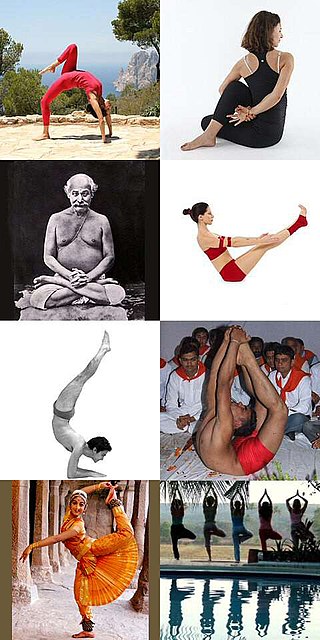
An asana is a body posture, originally and still a general term for a sitting meditation pose, and later extended in hatha yoga and modern yoga as exercise, to any type of position, adding reclining, standing, inverted, twisting, and balancing poses. The Yoga Sutras of Patanjali define "asana" as "[a position that] is steady and comfortable". Patanjali mentions the ability to sit for extended periods as one of the eight limbs of his system. Asanas are also called yoga poses or yoga postures in English.
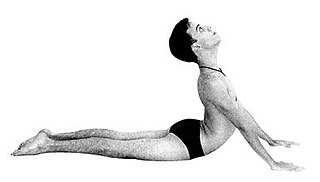
Bhujangasana or Cobra Pose is a reclining back-bending asana in hatha yoga and modern yoga as exercise. It is commonly performed in a cycle of asanas in Surya Namaskar, Salute to the Sun, as an alternative to Urdhva Mukha Svanasana, Upward Dog Pose. The Yin Yoga form is Sphinx Pose.

A split is a physical position in which the legs are in line with each other and extended in opposite directions. Splits are commonly performed in various athletic activities, including dance, figure skating, gymnastics, contortionism, synchronized swimming, cheerleading, martial arts, aerial arts and yoga as exercise, where a front split is named Hanumanasana and a side split is named Samakonasana. A person who has assumed a split position is said to be "in a split", "doing a split", or "doing the splits".

Dhanurasana is a back bending asana in hatha yoga and modern yoga as exercise.

Trikonasana or Utthita Trikonasana, [Extended] Triangle Pose is a standing asana in modern yoga as exercise. Variations include Baddha Trikonasana and Parivrtta Trikonasana.
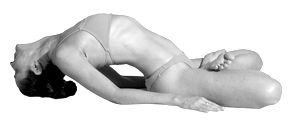
Matsyasana or Fish pose is a reclining back-bending asana in hatha yoga and modern yoga as exercise.

Salabhasana or Purna Salabhasana, Locust pose, or Grasshopper pose is a prone back-bending asana in modern yoga as exercise.
Tadasana, Mountain pose or Samasthiti is a standing asana in modern yoga as exercise; it is not described in medieval hatha yoga texts. It is the basis for several other standing asanas.

Shavasana, Corpse Pose, or Mritasana, is an asana in hatha yoga and modern yoga as exercise, often used for relaxation at the end of a session. It is the usual pose for the practice of yoga nidra meditation, and is an important pose in Restorative Yoga.
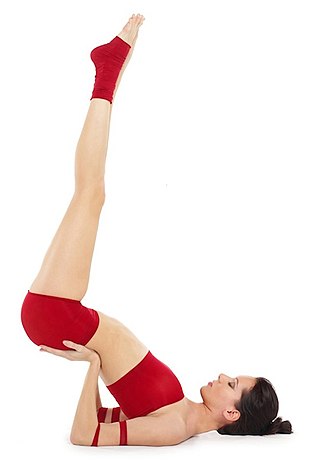
Viparita Karani or legs up the wall pose is both an asana and a mudra in hatha yoga. In modern yoga as exercise, it is commonly a fully supported pose using a wall and sometimes a pile of blankets, where it is considered a restful practice. As a mudra it was practised using any preferred inversion, such as a headstand or shoulderstand. The purpose of the mudra was to reverse the downward flow of vital fluid being lost from the head, using gravity.
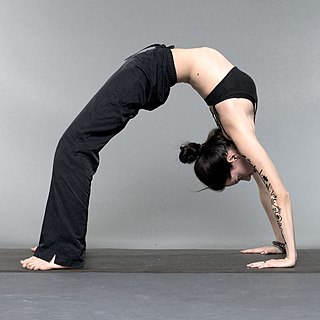
Chakrasana or Urdhva Dhanurasana is a backbending asana in yoga as exercise. The one-legged variant is often chosen by yoga practitioners who wish to advertise themselves.
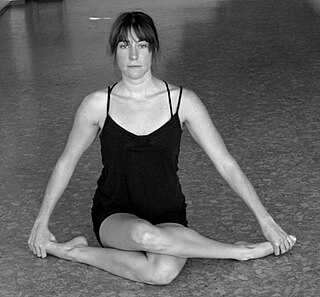
Yin Yoga is slow-paced style of yoga as exercise, incorporating principles of traditional Chinese medicine, with asanas (postures) that are held for longer periods of time than in other styles. Advanced practitioners may stay in one asana for five minutes or more. The sequences of postures are meant to stimulate the channels of the subtle body known as meridians in Chinese medicine and as nadis in Hatha yoga.

Virasana or Hero Pose is a kneeling asana in modern yoga as exercise. Medieval hatha yoga texts describe a cross-legged meditation asana under the same name. Supta Virasana is the reclining form of the pose; it provides a stronger stretch.

Kapotasana or Pigeon Pose is a kneeling back-bending asana in modern yoga as exercise. Asanas based on One-legged King Pigeon pose, Rajakapotasana, are also sometimes called "Pigeon".

Virabhadrasana or Warrior Pose is a group of related lunging standing asanas in modern yoga as exercise commemorating the exploits of a mythical warrior, Virabhadra. The name of the pose derives from the Hindu myth, but the pose is not recorded in the hatha yoga tradition until the 20th century. Virabhadrasana has some similarity with poses in the gymnastics of Niels Bukh the early 20th century; it has been suggested that it was adopted into yoga from the tradition of physical culture in India at that time, which was influenced by European gymnastics.
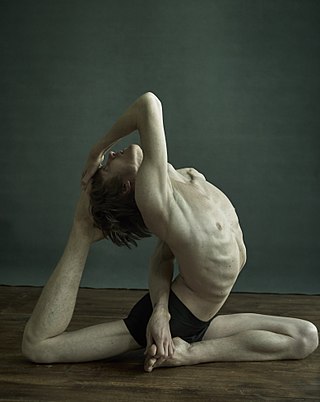
Eka Pada Rajakapotasana, Rajakapotasana, or [One-legged] King Pigeon Pose is a seated back-bending asana in modern yoga as exercise. The Yin Yoga form of the asana is named Swan Pose, while the Aerial yoga variant, supported in a hammock, is called Flying Pigeon Pose. The basic pose is described in the 20th century by two of Krishnamacharya's pupils, Pattabhi Jois and B. K. S. Iyengar; several other variants have been created. It is one of the yoga poses often used in advertising to convey desired qualities such as flexibility and grace.

Parshvottanasana or Intense Side Stretch Pose is a standing and forward bending asana in modern yoga as exercise.

Jathara Parivartanasana, Revolved Abdomen pose, Belly twist, or Spinal twist is a reclining twist asana in modern yoga as exercise.

Props used in yoga include chairs, blocks, belts, mats, blankets, bolsters, and straps. They are used in postural yoga to assist with correct alignment in an asana, for ease in mindful yoga practice, to enable poses to be held for longer periods in Yin Yoga, where support may allow muscles to relax, and to enable people with movement restricted for any reason, such as stiffness, injury, or arthritis, to continue with their practice.



















